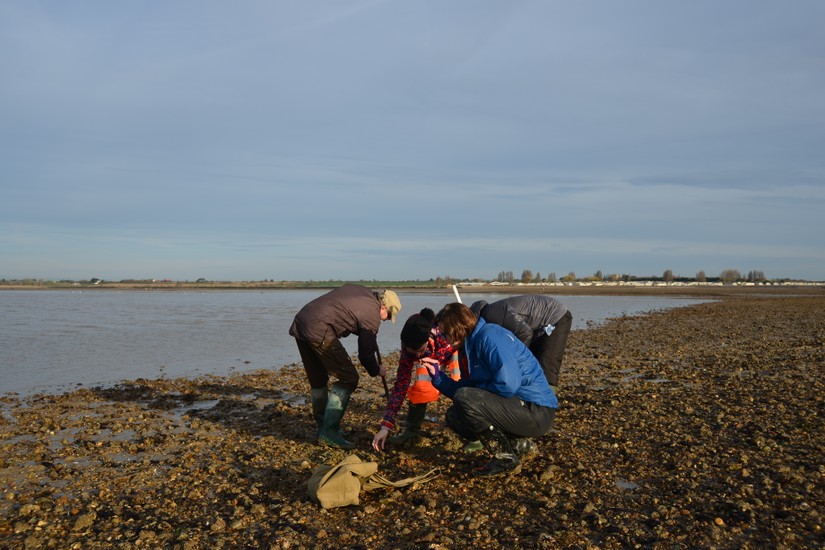A glimpse of Mersea's ice age past: environmental sampling on Mersea Island
04/12/2018 | Stephanie Ostrich
During an exceptionally low tide in March 2017, a team of CITiZAN volunteers and archaeologists made a massive discovery whilie field walking the mudflats of Mersea: a 2m-long Mammoth tusk! The short tidal window meant we only had minutes to record the fragile tusk and the environment around it before it was again covered by the sea.

Unfortunately, due to its weight and fragile condition we had to leave the exciting find in place, but thanks to our volunteers we did have time to record it rapidly using our smartphone app and fabulous local volunteer Jim made this spectacular 3D model. Models like these are scalable, and contain excellent detail which allow us to investigate artefacts even if we don't have the original.
We also took 7 samples of the environment above, around and below it to help us understand more about how this tusk ended up here, seperated from the mammoth itself. This involved scooping sediments into plastic sample bags, recording their location in relation to the tusk itself (e.g. east of tusk, or top surface) and by GPS as well.
We then sent these samples off to the Natural History Museum in London where their experts set off analysing them. They investigated our samples for interesting clues, including looking for the presence of tiny animals such as ostracods to see if any included those who preferred cold-climate and freshwater which went extinct in the Devensian, the last glacial period which ended around 12000 year ago. Our samples contained marine microfauna, and 12,000 years ago the sea-level was very low and the nearest true marine conditions would be off SW England. So the clues suggest the sediments in which we found the Mammoth tusk was modern marine accumulation from the Holocene, the modern period we are currently in, not from the time when mammoths and other megafauna would have roamed ice age Essex.
However, the report states that 'the size (2m long) and weight of the tusk must mean that it is still more or less in the same position as when the animal foundered. This was then probably a marsh or freshwater channel.' So it would seem our Mersea mammoth hasn't travelled far in 12,000 years, but the original landscape it was in has changed around it as the sea rose to meet it.
The work of our Mersea volunteers, including Jim's fabulous 3D model, has been also been featured on BBC News Online https://www.bbc.co.uk/news/uk-england-essex-46433562
*05/12/2018 clarification: The mammoth tusk itself was not dated to 12000 years ago. This date was used to give context to the Devensian/last glacial period.








